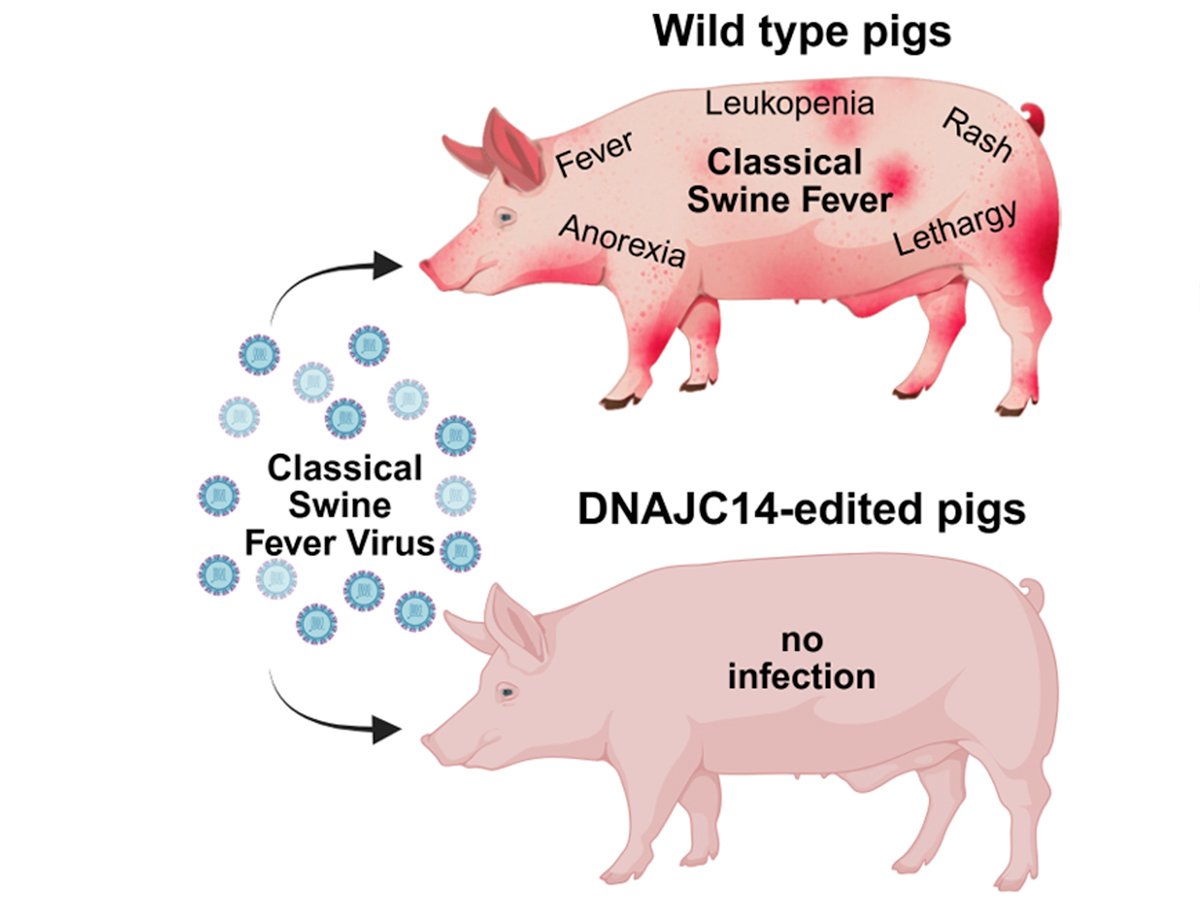Eric Johnson said the best news he received in 2010 was that sulfentrazone had been fully registered for use on peas, chickpeas, flax and sunflowers.
Calgary’s Nufarm Agriculture Inc. will market the Group 14 herbicide developed by American chemical manufacturer FMC Corp. under the brand name Authority.
“It’s going to be an important tool in managing Group 2 resistant broad-leaf weeds like kochia, wild buckwheat, lamb’s quarters and redroot pigweed,” said Johnson, a weed biologist with Agriculture Canada’s Scott research farm in Saskatchewan.
Read Also

Gene edited pig resistant to classical swine fever
British scientists have discovered a gene edit that could provide resistance to classical swine fever in pigs and Bovine Viral Diarrhea in cattle
He told growers attending the Pulse Days portion of Crop Production Week in Saskatoon that he’s been working with sulfentrazone since 2000, so he’s excited the product is finally going to be available.
Authority had previously been registered for use only on chickpeas in Saskatchewan and Alberta.
The soil-applied herbicide can be used with glyphosate during spring burnoff. It needs six to 13 millimetres of soil moisture to activate, so growers in drier areas will want to apply the chemical early.
Authority is ineffective against mustard species such as wild mustard, stinkweed and shepherd’s purse.
As well, it does not perform well in soil with greater than six percent organic matter, such as the black soil zone of northeastern Saskatchewan.
“It’s not a fit for everybody,” said Johnson.
He has yet to see a final label for the product but anticipates conditions and restrictions, including a recropping restriction of 24 months for canola and 36 months for lentils.
Johnson is confident the canola restriction will eventually be reduced to 12 months and he is working with the University of Saskatchewan’s Crop Development Centre to develop sulfentrazone tolerant lines of lentils.
Authority provides a solution for pulse growers in southern and central Saskatchewan who are struggling to control kochia.
Flax growers are also desperate for a product that controls kochia and redroot pigweed.
Sulfentrazone has shown considerable promise in its residual control of weeds, which should be a big benefit for an open canopy, non-competitive crop such as flax.
The chemical also works well in conjunction with other herbicides.
Johnson has found that a tank mix of Authority and a double dose of BASF’s Heat make a great combination for controlling stinkweed in chickpea crops.
Stinkweed control in two years of Saskatoon trials was consistently better than 80 percent.
The combination also provided 40 to 85 percent control of wild mustard in chickpea crops, with the best results occurring in moist to wet springs. Johnson hopes to have the Authority tank mix recommendations finalized within a year or two.
He said it is a good year to have a new herbicide on the market because weed populations tend to go up after wet years such as 2010.
“I expect we’ll see quite high densities of winter annual weeds in the spring, so a good burnoff is going to be critical.”
Perennial weeds also tend to thrive under wet conditions, so farmers could be facing more pressure from Canada thistle, sow thistle and scentless chamomile.
With the price of glyphosate coming down, growers may want to consider increasing their glyphosate application rates because sometimes that works just as well as having a tank mix partner.















